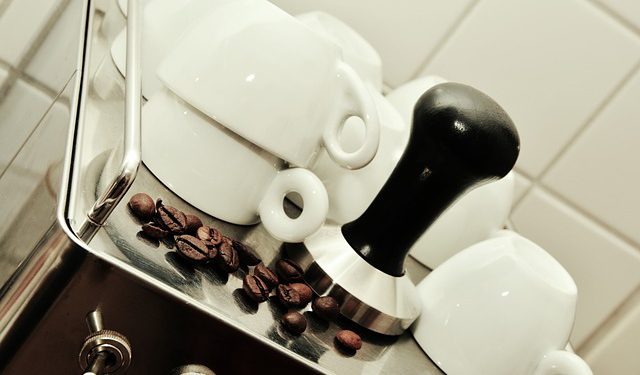
If coffee is the nectar of gods then espresso is its adrenaline junkie cousin who smoothly cruises through life at 100mph. Just as with every coffee-related beverage, the making of espresso is an art in itself and seeing the rich light brown color with blonde stripe-like highlights flow down during extraction is a beautiful thing to behold. Now following the school of thought that 1 + 1 = 2 and 2 x 2 = 4(just flow with me), a great double shot of espresso only happens if you make it right and if you want a repeat of this incredible taste over and over, you must clean your espresso machine often.
A Clog Is A Big Bump On The Road To Espresso Paradise
An espresso machine is made up of several parts all of which are very important and are linked together in making the best brew possible, but only if they are all working right. The best way to make sure that the parts are running smoothly is to clean the machine as regularly as your schedule allows. Keep in mind that a bad shot of espresso can ruin your day.
Some Recommended Espresso Machine Cleaning Tools And Supplies
- A great way to keep your group head clean is by using a quality espresso machine brush. I recommend this one from Amazon. However, if you want kind of the Cadillac of brushes, this one is also available.
- Keeping the interior of your machine clean is a good idea too. There are a couple different products that do a great job for this for keeping all the lines, valves and heads clean and free from coffee residue. One is a powder (click here for more info) and other is a tablet (click here).
- For cleaning the steam wand, this product on Amazon also does an excellent job.
1. Grinding
As this process really determines the quality of your espresso, you need to clean out all the parts related to this. The grinding chamber can either be easy to reach or will need you to take apart using tools. Clean the grinding chamber and the cogs warm water, cleaning product and a cleaning sponge. However, to avoid a lot of wear and tear to this part, keep the dismantling to a minimum. Empty out the dosing chamber if your next brew is after more than twenty minutes. This is because ground coffee goes stale very quickly and will definitely affect the taste of the next espresso shot. Use a specific brush or even a normal painting brush to empty and brush out this chamber. The brush shouldn’t have a metal clip between the bristles and handle to avoid scratches. The exit chute is a bridge between the doser and grinder and retains coffee grinds after grinding. Since it’s a hard place to reach, when you’re preparing to brew a fresh shot, run some fresh grinds through the chute to chuck any stale remnants then toss them away before you start.
2. Got Milk?
The steaming wand and nozzle are used for the milk and are quite easy to clean. For a home espresso machine, you can wipe it with a clean wet towel and get any dried milk out of the nozzle using a clean, straight pin. The best way however is to insert the steam wand into water and press the ‘Steam’ button and this will ensure all the milk bits are cleaned out then you dry the wand and nozzle.
3. Brew-Group
The portafilter is an essential part of the brew-group of the espresso machine. A lot of times, due to overfilling the basket or not tamping down the coffee grinds properly or even shaking up the portafilter during the extraction, the shower screen can clog up. This affects water distribution and instead of your coffee flowing through the bottomed or bottomless portafilter evenly, it creates a channel and absolutely destroys the end result in your cup due to uneven distribution. This affects the entire shower screen, face and even the brew heads. Use a brew-head-specific brush to scrub the area and then use water to flush out the screen and wipe down with a wet cloth. You can soak the detachable parts about once a month in cleaner to really get the grinds out.
4. The Water Tank
Espresso 101 indicates that the espresso you make is only as good as the water you use. Using a simple carbon filter keeps out the mineral impurities that affect the taste of your brew. Despite using a water filter, mineral residue can build up in the water tank. Fill the tank with clean water and add descaling tablets that you can get from the espresso machine’s manufacturer or even citric acid and click the descale option from the program menu and place a big dish under the steam nozzle. After this use a container of cold water and immerse the steam nozzle and allow to froth three times to remove any mineral residue from it. Clean regularly to avoid clogs and remember to read the manual that comes with your specific espresso machine. Add that knowledge to these practical tips and you can easily go about unclogging your espresso machine.
You might also like: 8 Benefits Of Drinking Espresso
